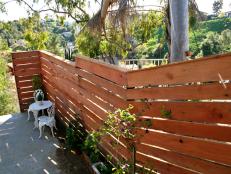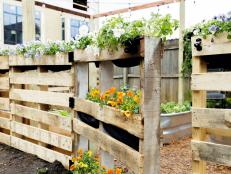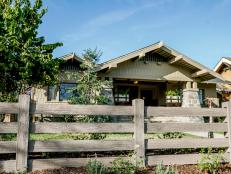Do I Need a Permit to Build a Fence?
If you’re thinking about building a new fence or making large-scale repairs to an old one, you may or may not need a permit. Here’s what you need to know.

Shutterstock/DMITRY TILT

Your Contractor Can Handle It for You
If you’re busy and the notion of dealing with drawings and local government bureaucrats is unappealing to you, don’t fret. If you’re hiring a contractor to build your fence, they can generally handle the permitting process for you. You’ll ultimately have to sign off on whatever permits are needed (if any), but having a builder handle it for you saves a ton of hassle. If you’ve chosen to build your own fence, you’ll be in charge of pulling and paying for permits, so read on to know what steps you’ll need to take.
Where You Live Makes a Big Difference
Building a fence somewhere like Seattle or Los Angeles is likely going to be more difficult than it will be in someplace more rural or open like western Texas. In densely populated neighborhoods, your fence is subject to ordinances that take your neighborhood’s design guidelines and public safety into consideration. If you’re a farmer, or you live in a rural area, the odds are good that you’ll be able to build whatever you want. If that’s your situation, it’s still a good idea to consult some building codes to make sure that what you’re building is structurally safe and strong. No matter where you live, it’s always a good idea to check with your city’s building inspector’s office to see if you’re required to have a permit. Building without a required permit can prove to be costly and cause major difficulties in the long run.
What You’re Building Also Matters
Your fence could be subject to any number of regulations purely based on where you’re locating it, what it’s made out of and how tall you’re planning on building it. For example, if you’re planning on putting a fence all the way around your house, you can typically build six to eight feet high in the backyard but will likely be restricted to 3.5 feet in the front yard. There may also be some material restrictions you have to adhere to based on your neighborhood ordinance, historical restrictions or HOA rules. It’s very unlikely that you’ll be allowed to erect a barbed wire fence if you live in any kind of residential setting, and in some neighborhoods, all the fences might be required by the homeowner’s association to be constructed of the same materials.
Permitting for Repairs and Replacement
Basic repairs to any fence almost universally do not require a permit, but the definition of what constitutes a repair can be fairly strict. Typically, you’re allowed to make repairs on a 1:1 basis. That means if you take out a wooden six-foot post, you have to replace it with the same type and style of post. You cannot progressively replace parts in an attempt to build a taller or completely new fence.
If your fence is damaged beyond repair, and you need to replace more than a single section of it, you’re likely going to need a permit. Even if you’re constructing an identical replacement, a permit is likely going to be required. In the event of a direct replacement, a permit should be fairly easy to obtain if local codes haven’t changed drastically.
So How Hard Is It to Get a Permit?
As with most construction projects, ease of obtaining a permit depends on the municipality you live in. While the process isn’t typically difficult, it can be trying at times. Here’s how you can be prepared to deal with whatever city hall throws at you:
- Call your building inspector’s office or city hall first to determine if you even need a permit for what you’re planning to build. They can give you any necessary paperwork and a copy of the codes you’ll need to be familiar with. There will likely be a fee required to submit your application for approval, so make sure to ask about any costs.
- Obtain a survey of your property lines and have the surveyor mark the boundaries outside. Then, have him provide you with a digital copy of the survey. This will help you sketch the perimeter of your fence and give you some insurance in case the building inspector requires it.
- Once you have your property survey, it’s time to sketch out your fence perimeter. Make sure that you abide by any required setbacks from the property line.
- Finally, you’ll want to be able to provide a sketch or a rendering of what your fence will look like along with a basic set of dimensions for height and material specifications.













































